To DIY or not to DIY, that is the question. Whether you want to make your own homemade salad dressing because it’s more delicious, cost effective, or because you have control over the ingredients, having an arsenal of homemade dressing recipes at your fingertips will help. While I don’t always make my dressings homemade (more on that later), knowing how at leasts gives you the option and therefore control. So, that being said, here are 10 homemade salad dressing recipe to keep tucked away in your back pocket (or your browser’s bookmarks) to use when you see fit!
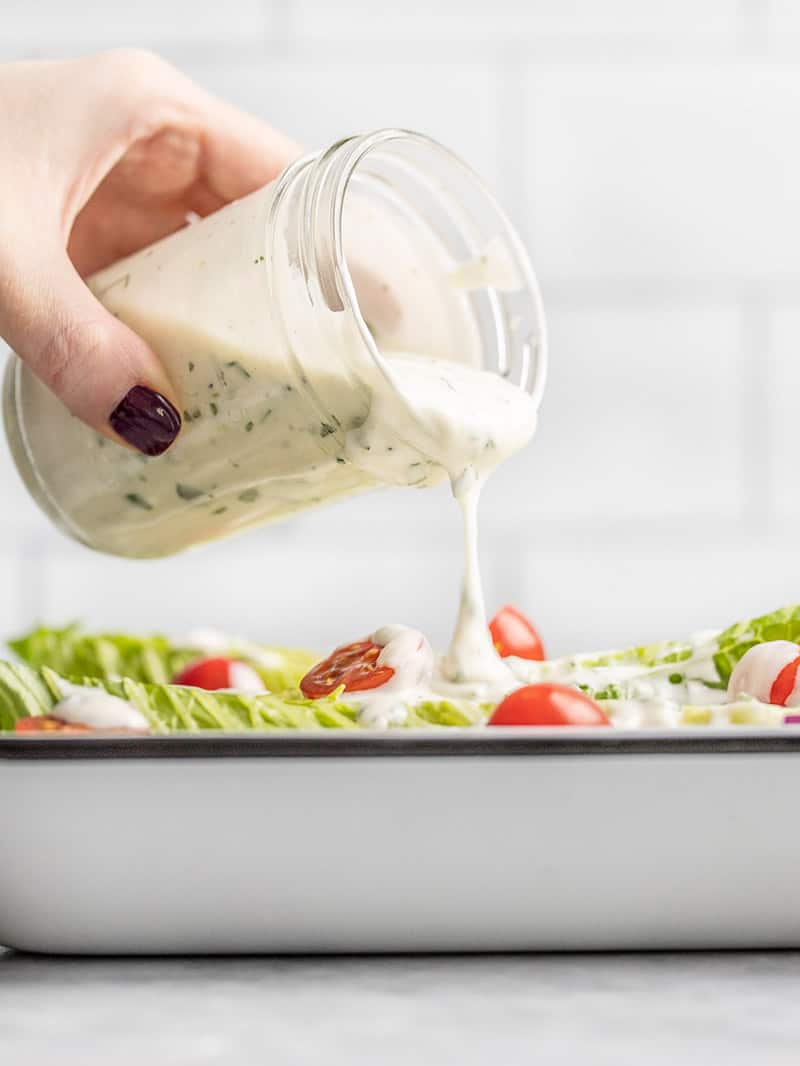
Why Make Homemade Salad Dressing from Scratch?
Spoiler alert: I don’t always make my own salad dressing from scratch. Sometimes it makes sense to make it yourself, sometimes it it doesn’t. I’ll quickly run through the advantages and disadvantages to help you decide when and why it will be beneficial to make your own homemade salad dressing, and when to buy store bought.
Advantages of Homemade Salad Dressing:
- You control the ingredients – you can avoid preservatives, stabilizers, allergens, and control other ingredients like sugar, fat, or salt.
- It can be cost effective – if you already have the ingredients on hand, you can avoid making an additional purchase.
- Fresh flavors – because you’re mixing up the fresh ingredients, you can often times get a bigger flavor punch.
- Small batches with fewer leftovers – reduce the amount of half used bottles in your fridge by mixing up small batches of dressing as needed.
Disadvantages of Homemade Salad Dressings:
- Shorter shelf life – because homemade salad dressings don’t contain preservatives, you generally want to keep them no longer than 5 days in the refrigerator.
- It can be more expensive – if you don’t already have the ingredients on hand, you buy really high quality ingredients, or the dressing requires an ingredient you don’t normally use, it can become costly.
- You can’t make one serving at a time – if you are cooking for one and tend to eat only one or two salads a week, you may have a hard time using even a small batch of homemade salad dressing before it goes bad.
What do You Need to Make Homemade Salad Dressing?
You don’t need a whole lot! Oil, vinegar, herbs and spices, and sometimes other ingredients like Dijon mustard, mayonnaise, citrus, or avocado. A basic salad dressing consists of these components: fat, acid, flavor, and an emulsifier (ingredients that bond to both fat and water to keep the dressing from separating). Here are some examples of each of those components:
- Fat: olive oil, neutral oils (safflower, avocado, peanut, canola, grapeseed), tahini, peanut butter, avocado, sour cream, mayonnaise
- Acid: vinegar (apple cider vinegar, rice vinegar, balsamic vinegar, champagne vinegar), lemon juice, lime juice
- Flavor: garlic, herbs (basil, oregano, thyme, cilantro, chives), spices (cayenne, cumin, paprika, crushed red pepper), ginger, green onion, shallots, sugar, salt, pepper
- Emulsifiers: mustard (Dijon, yellow mustard, coarse deli mustard), mayonnaise, egg yolk, honey
So, as you can see, many of those ingredients are shelf-stable pantry staples that you can keep on hand to whip up your own dressings on demand! If you don’t have a well stocked pantry right now, just concentrate on buying one or two items per week and you’ll be there in no time!
Working on that basic formula, here are 11 homemade salad dressings that you can start experimenting with!
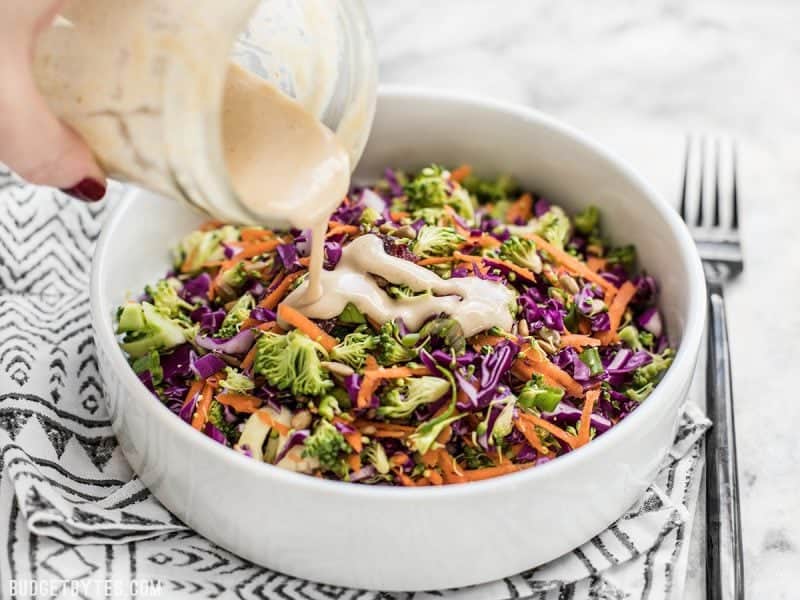 (pictured above: Sweet Crunch Winter Salad)
(pictured above: Sweet Crunch Winter Salad)
10 Easy DIY Salad Dressing Recipes:
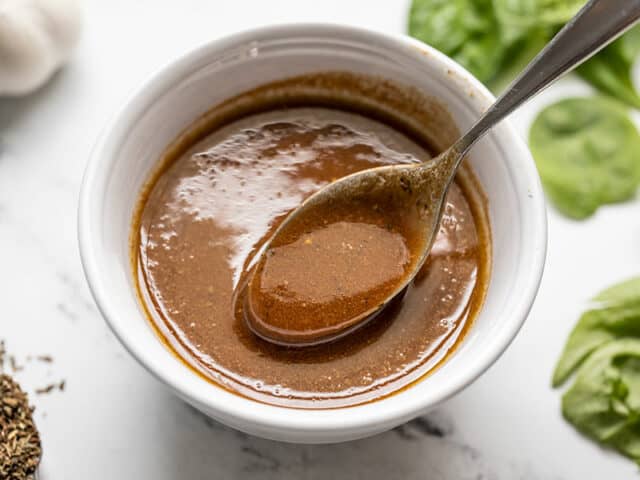
Easy Homemade Balsamic Vinaigrette
Easy Homemade Balsamic Viniagrette – This is probably the first dressing recipe that everyone should learn. It’s simple, good on everything, and has plenty of room for customization!
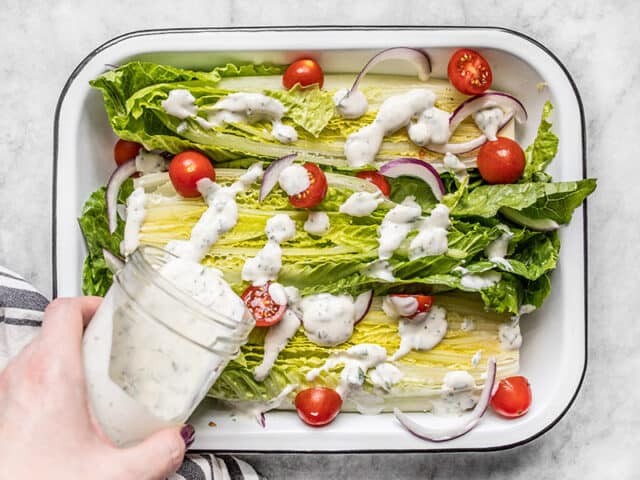
Homemade Ranch Dressing
Homemade Ranch Dressing – Because who doesn’t love ranch dressing? This is America, right? 😅I like making this homemade version because it’s not as sugar laden as bottled versions, and I feel like bottled ranch tends to have the most questionable ingredients out of all store bought dressings.
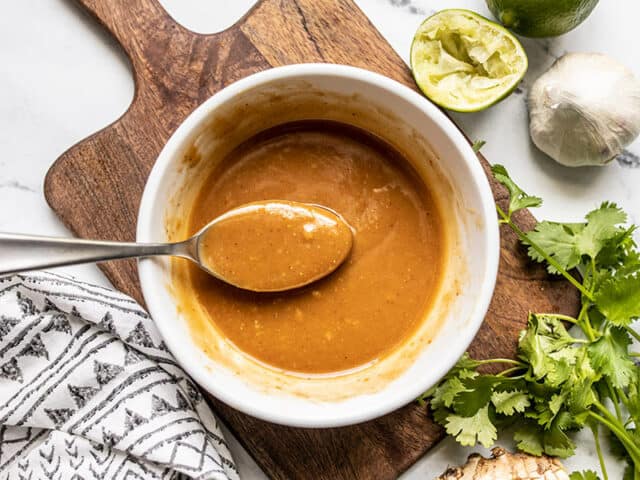
Peanut Lime Dressing
Peanut Lime Dressing – This dressing is positively addictive!! Try it on my Cold Peanut Noodle Salad, or just drizzle it over some roasted sweet potatoes and you won’t be disappointed!
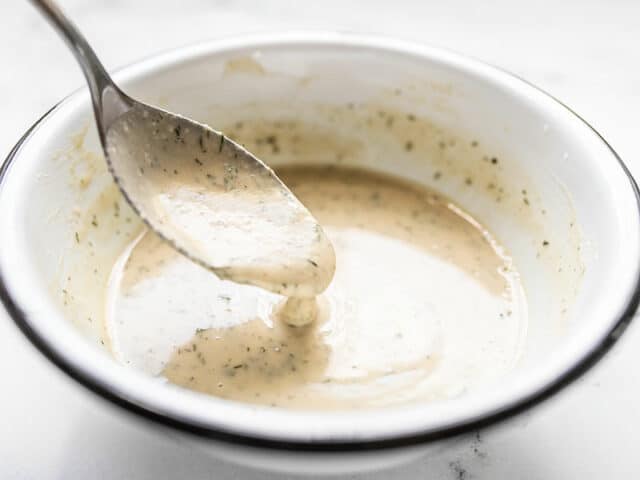
Lemon Dill Tahini Dressing
Lemon Dill Tahini Dressing – Tahini is a powerhouse ingredient for homemade salad dressings if you’re vegan or trying to avoid dairy. It offers a nice creaminess to salad dressing without having to use dairy! Plus it lasts just about forever in your fridge.
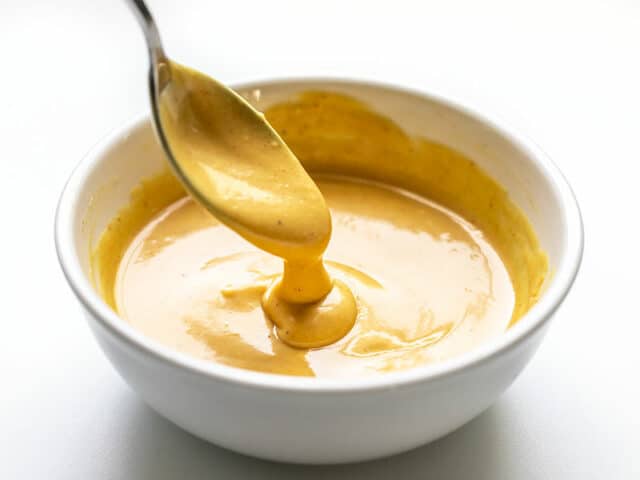
Honey Mustard Sauce
Honey Mustard Sauce – This one is both a sauce AND a dressing. I love it on my Honey Mustard Broccoli Salad, but you can also use it as a dressing for chicken salad.
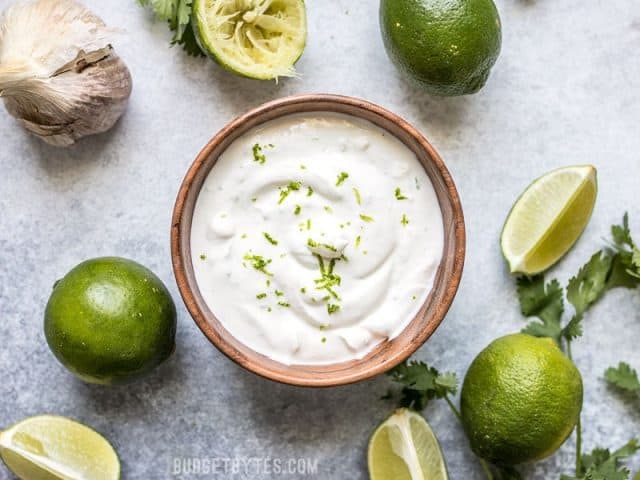
Lime Crema
Lime Crema – This dressing has earned a cult following. Just a few simple ingredients and it’s so freaking amazing drizzled on just about anything. Use it on a taco salad, tacos themselves, or even a roasted vegetable salad like my Roasted Sweet Potato Rainbow Salad.
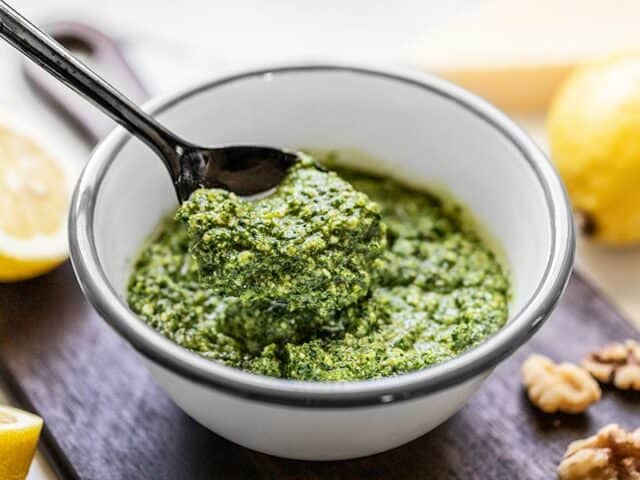
Kale Pesto
Homemade Kale Pesto – Pesto makes a great dressing, especially for pasta salads. And with this cheaper kale version, you’ll also be adding a healthy dose of greens to your meal.
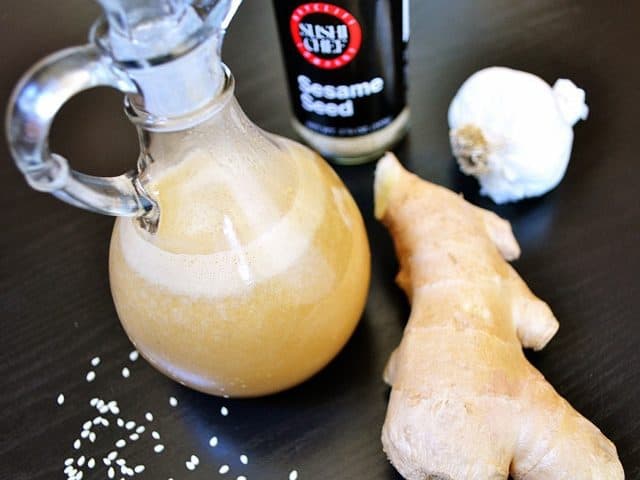
Sesame Ginger Dressing
Sesame Ginger Dressing – Zingy fresh ginger and nutty toasted sesame oil come together for a flavorful dressing that will go with any Southeast Asian inspired salad. It goes really great with finely shredded cabbage, chicken, or shrimp!
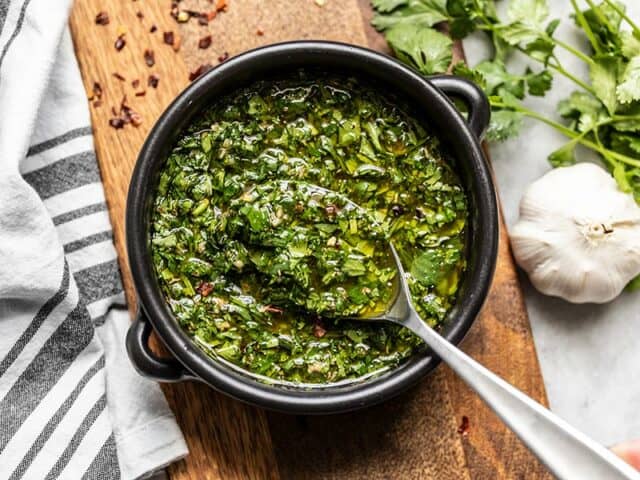
Chimichurri Sauce: Good on Anything and Everything
Chimichurri Sauce – Sauces can often times double as a dressing. I love using a chimichurri sauce as a dressing for pasta salad, or as a dressing to drizzle over kebabs!

Creamy Avocado Dressing
Creamy Avocado Dressing – If you love “green” flavors, this one is for you. It’s creamy, but light and herby, which makes it perfect for your big bowl garden vegetables type salads! This one also makes a great dip for fresh vegetables.
The post 10 Simple Homemade Salad Dressing Recipes appeared first on Budget Bytes.

0 comments